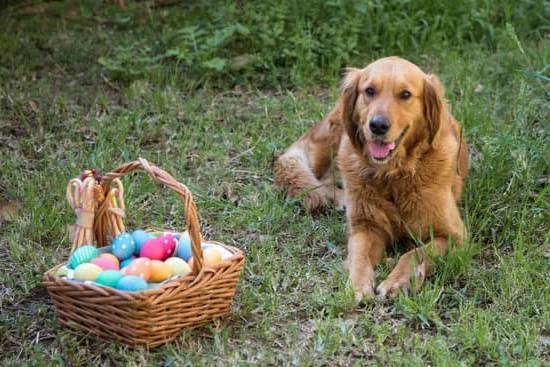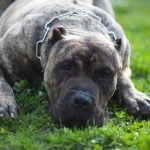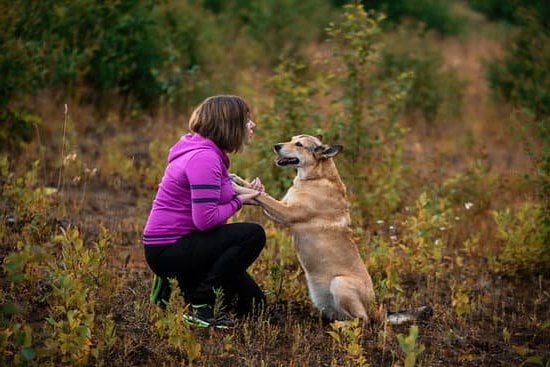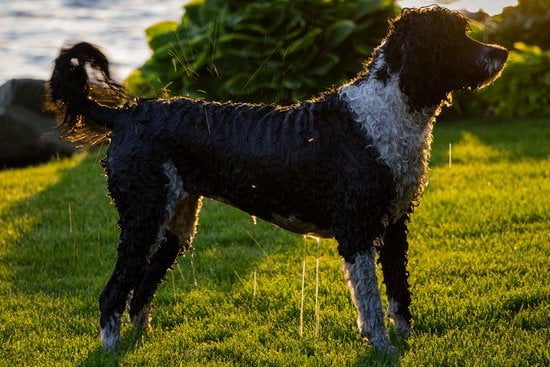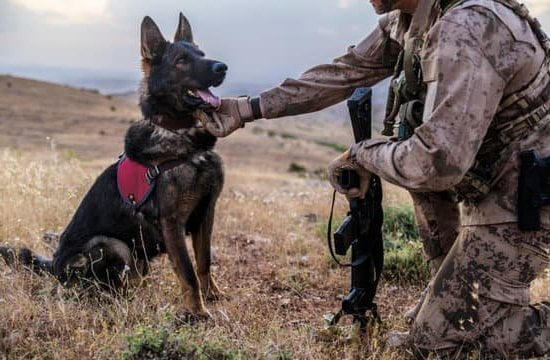As our furry friends age, it becomes increasingly important to understand their behavior and specific needs, especially when it comes to training. In this article, we will explore how to train older boxer dogs, taking into consideration their unique physical and behavioral traits. From assessing their physical limitations to establishing a training routine and addressing common behavioral issues, we will provide you with valuable insights and tips on how to effectively train your older boxer dog.
Older boxer dogs have distinct behavior patterns that differ from younger dogs, making it crucial for owners to comprehend these changes in order to successfully train them. By understanding the behavior of older boxer dogs, pet parents can tailor their training methods to accommodate the needs of their beloved pets as they enter their golden years.
It is essential for dog owners to recognize any physical limitations that may arise as their boxer dog ages. Whether it’s joint pain or decreased mobility, assessing these limitations will allow for a more tailored and compassionate approach to training. Understanding these limitations will also help in determining appropriate exercises and activities for older boxer dogs.
Assessing the Physical Limitations of Older Boxer Dogs
As boxer dogs age, they may face a variety of physical limitations that can impact their ability to participate in training activities. It is important for dog owners to be aware of these limitations and make accommodations to ensure the safety and well-being of their older pets.
Understanding the Physical Changes
Older boxer dogs may experience a decline in mobility, flexibility, and strength. Arthritis, joint pain, and reduced stamina are common issues that older boxers may face. Additionally, aging dogs may also have sensory impairments such as diminished eyesight or hearing. Understanding these physical changes is crucial in assessing the limitations of older boxer dogs.
Adjusting Training Methods
When training older boxer dogs, it is essential to modify training methods to accommodate their physical limitations. This may involve reducing the intensity and duration of exercises, utilizing softer surfaces for workouts to minimize joint impact, and incorporating more frequent rest periods during training sessions.
Seeking Veterinary Guidance
Before starting any training regimen with an older boxer dog, it is imperative to seek advice from a veterinarian. A professional can provide insight into the specific physical limitations of the dog and offer recommendations on how to safely train an older boxer.
They can also identify any underlying health issues that need to be taken into consideration during training. Consulting with a vet can aid in developing a customized training routine that aligns with the older dog’s abilities and needs.
By understanding and addressing the physical limitations of older boxer dogs, pet owners can adapt their training approach to ensure safe and effective methods for enhancing their pet’s behavior and overall well-being.
Establishing a Training Routine for Older Boxer Dogs
Older boxer dogs have specific needs when it comes to training. With their age, they may have physical limitations and behavioral issues that need to be taken into account. In this section, we will discuss how to establish a training routine for older boxer dogs.
First and foremost, it’s essential to consider the age-related changes that older boxer dogs may experience. This includes decreased energy levels, joint stiffness, and potential health issues. Understanding these physical limitations is crucial in tailoring a training routine that is suitable for their age and condition.
When establishing a training routine for older boxer dogs, it’s important to be patient and use positive reinforcement. Unlike younger dogs, older boxer dogs may take longer to learn new commands or behaviors. It’s important to celebrate small victories and progress, while also being understanding of their limitations.
In addition to regular training exercises, incorporating specialized exercises for older boxer dogs can help maintain their mobility and strength. This can include low-impact activities such as swimming or gentle walks. Mental stimulation is also important for older boxer dogs, so including activities that engage their minds can be beneficial in their overall well-being.
| Training Routines | Older Boxer Dogs |
|---|---|
| Understanding Physical Limitations | Joint stiffness, decreased energy levels |
| Patience and Positive Reinforcement | Celebrate small victories, understand limitations |
| Specialized Exercises | Swimming, gentle walks for mobility |
Using Positive Reinforcement and Patience in Training Older Boxer Dogs
Training older boxer dogs can be a rewarding but challenging experience, especially when it comes to addressing their unique behavior and physical limitations. It’s important to approach their training with a positive attitude and plenty of patience. Here are some important tips for using positive reinforcement and patience in training older boxer dogs:
1. Be patient: Older boxer dogs may take longer to learn new commands or behaviors due to age-related factors such as decreased mobility or cognitive decline. It’s crucial to be patient and understanding during the training process, allowing them the time they need to adjust and learn at their own pace.
2. Use positive reinforcement: Positive reinforcement, such as verbal praise, treats, or favorite toys, can be highly effective in motivating older boxer dogs during training sessions. When they exhibit desired behaviors or successfully complete a command, be sure to reward them immediately to reinforce the behavior.
3. Avoid punishment: Punishing older boxer dogs for undesired behaviors is not only ineffective but can also cause stress and anxiety, which can exacerbate age-related issues. Instead of reprimanding them for mistakes, focus on redirecting their behavior and offering positive reinforcement when they respond appropriately.
By implementing these techniques, you can create a positive and supportive training environment for your older boxer dog while helping them maintain a sense of accomplishment and satisfaction as they continue learning in their golden years.
Addressing Common Behavioral Issues in Older Boxer Dogs
As boxer dogs age, they may exhibit certain behavioral issues that can be challenging for pet owners. Some common behavioral problems in older boxer dogs include anxiety, aggression, and cognitive decline. It’s important to address these issues with patience and understanding to ensure the well-being of your aging canine companion.
One of the key strategies for addressing behavioral issues in older boxer dogs is to provide consistent training and positive reinforcement. This can help reinforce good behavior and reduce anxiety or aggression. Additionally, mental stimulation through interactive toys and games can help keep older boxer dogs engaged and prevent cognitive decline.
Another common issue in older boxer dogs is mobility problems due to arthritis or other age-related conditions. It’s essential to create a comfortable and safe environment for training to accommodate their physical limitations. This could include using ramps or providing easy access to their food and water bowls.
It’s also crucial to adjust your expectations when training older boxer dogs. They may not have the same energy levels or ability to learn new commands as quickly as when they were younger. Understanding their limitations and adjusting your training routine accordingly is essential for successful training outcomes.
| Common Behavioral Issues | Strategies |
|---|---|
| Anxiety and Aggression | Consistent training, positive reinforcement, mental stimulation |
| Mobility Problems | Create a comfortable environment, adjust training routine |
| Cognitive Decline | Mental stimulation through interactive toys and games |
Incorporating Specialized Exercises for Older Boxer Dogs
As older Boxer dogs age, it is important to incorporate specialized exercises into their training routine in order to maintain their physical health and overall well-being. These exercises can help improve mobility, joint flexibility, and muscle strength, while also providing mental stimulation for these older dogs.
Low-Impact Exercises
Due to the physical limitations that come with age, it is essential to focus on low-impact exercises for older Boxer dogs. Activities such as swimming, gentle walks, and slow-paced agility exercises can help keep them active without putting too much strain on their joints. These exercises also provide a great opportunity for bonding between the dog and its owner.
Balance and Coordination Exercises
Incorporating balance and coordination exercises into an older Boxer dog’s routine can help improve their stability and prevent falls or injuries. Simple activities like placing treats on a wobble board or teaching the dog to walk over obstacle courses can challenge their balance and stimulate their minds at the same time.
Mental Stimulation Through Interactive Toys
Older Boxer dogs may experience cognitive decline as they age, so it is crucial to provide them with mental stimulation. Interactive toys such as treat puzzles, slow feeder bowls, and scent games can help keep their brains sharp and engaged. These activities not only provide mental enrichment but also encourage physical activity as the dog works to solve the puzzle or find the hidden treats.
Incorporating specialized exercises into the training routine of older Boxer dogs requires patience, understanding of their physical limitations, and a willingness to adapt activities based on individual needs. By focusing on low-impact exercises, balance and coordination activities, as well as mental stimulation through interactive toys, owners can help maintain their older Boxer’s physical health and enhance their overall quality of life.
Utilizing Mental Stimulation for Older Boxer Dogs
As dogs age, it’s important to keep them mentally stimulated to prevent cognitive decline and maintain their overall well-being. Older boxer dogs may not have the same physical abilities as they once did, but mental stimulation can still be a vital part of their training routine. Here are some ways to utilize mental stimulation for older boxer dogs:
- Interactive Toys: Providing your older boxer with interactive toys can help keep their mind engaged. Puzzle toys that dispense treats can challenge them mentally and provide a rewarding experience.
- Scent Work: Engaging in scent work activities can tap into your older boxer’s natural instincts and provide mental stimulation. You can hide treats around the house or yard for them to find, or even participate in organized nose work classes.
- Training Games: While physical exercise may be limited for older boxer dogs, you can still engage them in training games that require mental focus. Simple obedience exercises like “sit,” “stay,” and “come” can help keep their minds sharp.
In addition to these mental stimulation activities, it’s important to consider the individual needs of your older boxer dog. Some may respond better to certain types of mental exercises than others, so it’s essential to observe their preferences and adjust accordingly.
Overall, incorporating mental stimulation into the training routine for older boxer dogs is crucial for maintaining their cognitive function and enhancing their quality of life as they age.
Providing Proper Nutrition and Care for Older Boxer Dogs
As your boxer dog ages, it’s important to take their changing nutritional needs into consideration. Older dogs may require a different diet that is lower in calories and higher in fiber to accommodate their decreased activity levels and potential weight gain.
Consult with your veterinarian to determine the best food for your older boxer, as they may also have specific health issues that need to be addressed through their diet. Additionally, consider providing supplements such as glucosamine and omega-3 fatty acids to support joint health and overall well-being.
In addition to adjusting their diet, older boxer dogs also require special care to ensure they remain comfortable and healthy. Regular veterinary check-ups are crucial for monitoring any age-related health concerns such as arthritis, vision or hearing loss, dental issues, and cognitive decline. Keep an eye out for any signs of discomfort or pain while training your older boxer, as they may be more prone to injuries and muscle stiffness.
Supporting the overall well-being of your older boxer also involves providing them with a comfortable living environment. Make sure they have a soft bed in a warm place where they can rest without being disturbed.
Consider installing ramps or steps to help them reach elevated surfaces more easily, especially if they have mobility issues. It’s important to pay close attention to any changes in behavior or physical condition that may signify the need for additional care or modifications in their training routine.
As you focus on training your older boxer dog, remember that proper nutrition and care play a significant role in maintaining their health and ensuring successful training outcomes. By addressing their specific needs through tailored nutrition, regular veterinary care, and a supportive living environment, you can set the stage for effective training sessions that cater to their individual circumstances.
Remember that patience and understanding are key elements when adapting training techniques for older dogs. Understanding the behavior of older boxers will greatly aid you in this process – as will avoid rushing some ofmore challenging exercises than pups often find easier.
Creating a Comfortable and Safe Environment for Training Older Boxer Dogs
In conclusion, training older boxer dogs requires a deep understanding of their behavior and physical limitations. It is essential to establish a training routine that takes into account their age-related changes and health conditions. Using positive reinforcement and patience is key to successfully training older boxer dogs, as they may take longer to learn new commands or behaviors.
Addressing common behavioral issues in older boxer dogs, such as anxiety or aggression, is crucial for their well-being and the success of the training process. Incorporating specialized exercises and mental stimulation can help keep them physically and mentally active, improving their overall quality of life.
Providing proper nutrition and care is also important in ensuring the health and longevity of older boxer dogs. Creating a comfortable and safe environment for training not only contributes to their well-being but also sets the stage for successful training sessions. By following these guidelines on how to train older boxer dogs, owners can help their beloved pets remain happy, healthy, and well-behaved throughout their golden years.
Frequently Asked Questions
What Is Considered Old for a Boxer?
The age at which a boxer is considered old can vary depending on the individual dog. Generally, boxers are considered seniors around 7-10 years old. However, with proper care, some boxers can live to be 12 or older.
Are Boxer Dogs Difficult to Train?
Boxer dogs can be a bit stubborn and headstrong, which can make them appear difficult to train. However, with consistency, patience, and positive reinforcement techniques, they can actually be trained effectively.
Is 12 Years Old for a Boxer Dog?
A 12-year-old boxer dog is definitely on the senior end of the spectrum. At this age, most boxers will have slowed down considerably and may start experiencing health issues associated with old age. It’s important to provide them with extra care and comfort during this stage of their lives.

Welcome to the blog! I am a professional dog trainer and have been working with dogs for many years. In this blog, I will be discussing various topics related to dog training, including tips, tricks, and advice. I hope you find this information helpful and informative. Thanks for reading!

